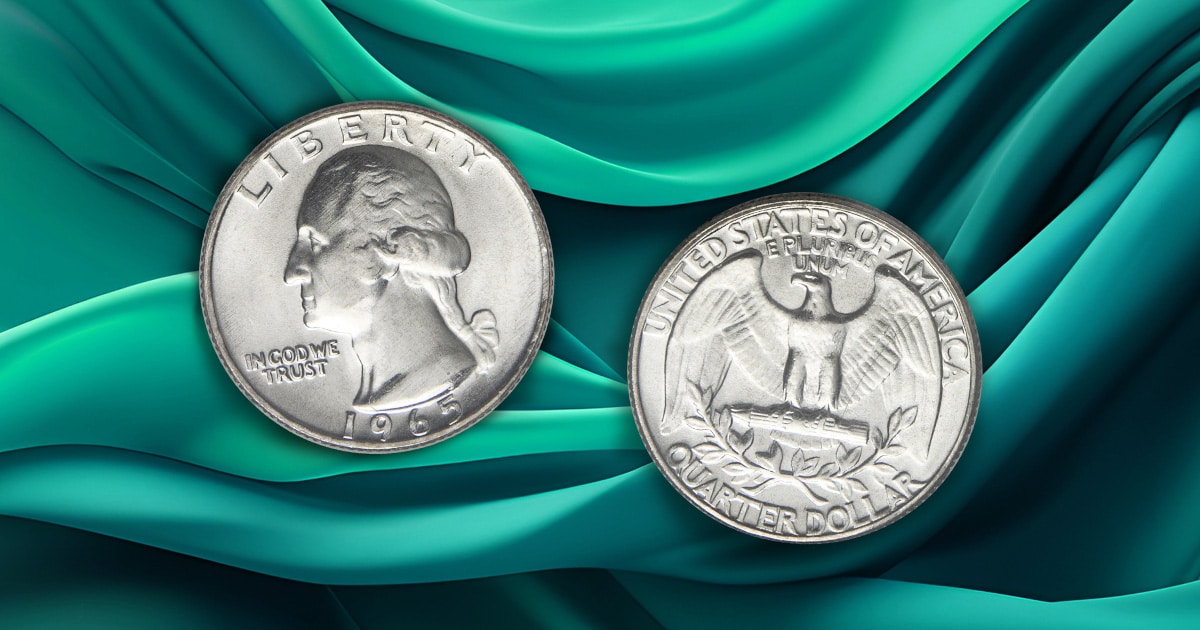
The silver content of a 1965 quarter should be 0%. Junk silver quarters were not produced after 1964. At least none were officially produced. So, Washington quarters produced with silver in 1965 would categorically be considered error coins, even if there were no issues with the strike.
1964 was the Final Year for 90% Silver Quarters
Aside from the cent and nickel, most coins were made with silver until 1964.
Due to rising silver prices and hoarded silver coins, Congress decided to begin eliminating silver from circulating dimes and quarters with the Coinage Act of 1965. Since that year, both the quarter and dime have been composed of copper and nickel.
Were Any Silver Quarters Produced in 1965?
While no silver quarters should have been produced in 1965, they were. One step in coin production is loading blanks, or planchettes, into a hopper, which holds them until they are struck. From the hopper, blanks are fed into the coin presses.
If silver blanks from 1964 were left or lodged in the hopper when the mint staff began producing 1965 coins, it would have resulted in silver quarters bearing a 1965 date. At some point before July 1966, that is what is believed to have occurred. Silver blanks worked their way loose inside the mint hopper and were coined alongside copper and nickel quarters.
How To Tell If Your 1965 Quarter is Silver
There are two easy ways to determine if your 1965 quarter is silver at home.
- Weigh your quarter. Silver quarters weigh 6.25 grams and clad quarters weigh 5.67 grams.
- Visually examine your quarter. Silver quarters do not have a copper color visible on the reeded edge of the coin, but copper and nickel quarters do. Silver quarters have a little bit more shine than copper and nickel quarters do.
Where are the rare 1965 silver quarters? Collectors are still looking for these error coins. They could be in someone’s coin jar, in circulation, or lost at the bottom of a wishing well. Some collectors try to find rare coins by “buying” numerous rolls of quarters from a bank or random bags of “junk silver” from coin dealers. They then sift through them, looking for key date years and known error coins. Sometimes, they get lucky.





